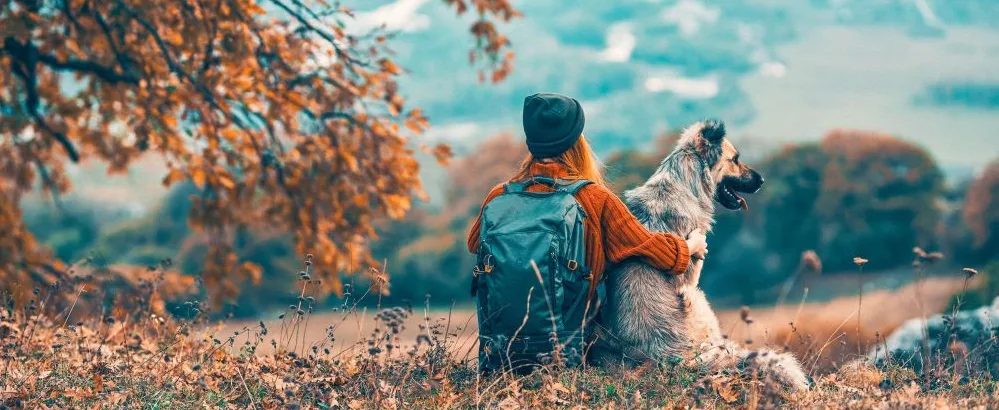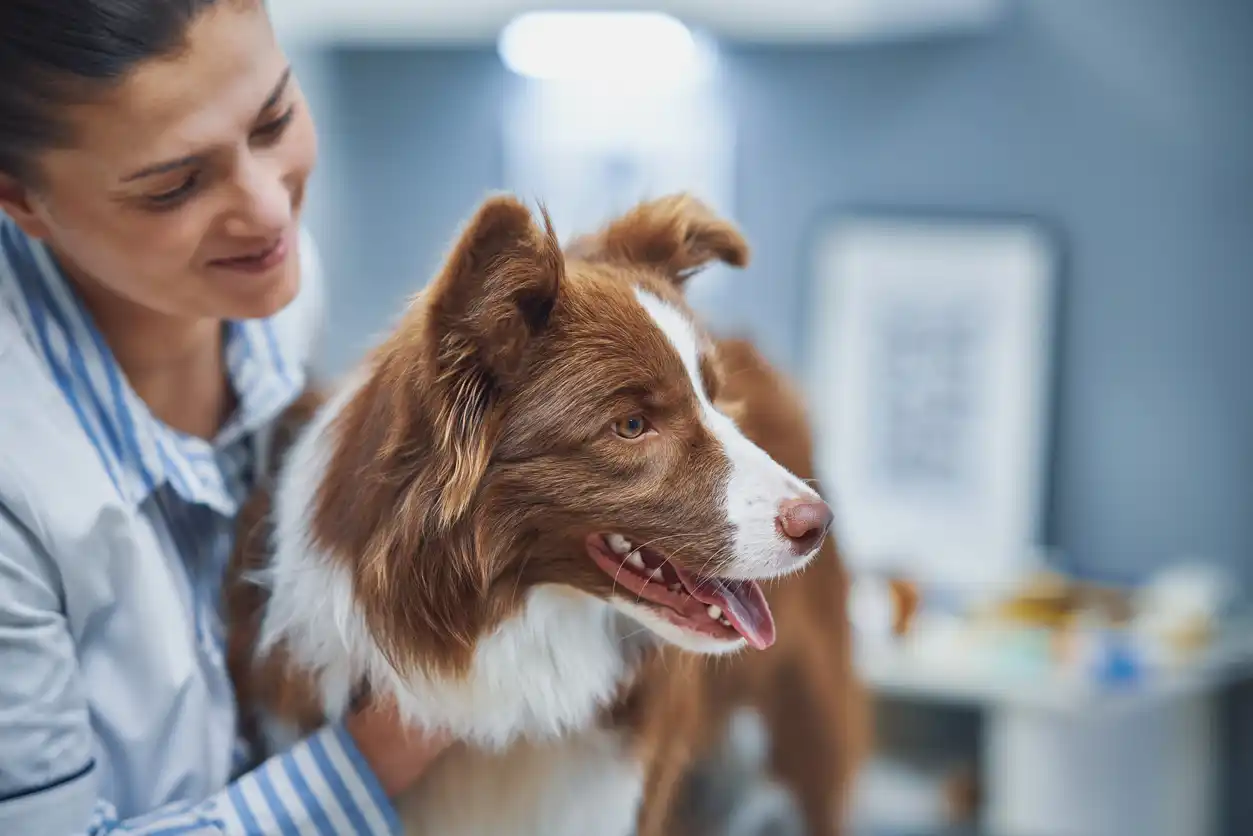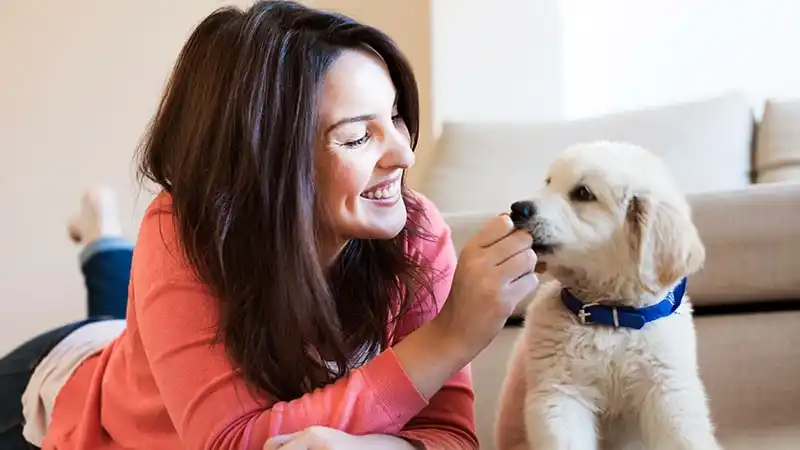AKC Pet Insurance’s Top 5 Dog-Safety Tips for Fall
Fall is a time to celebrate. With the changing weather comes new safety issues to consider for your pets. So, before you hit the trails and adjust to your new fall schedule, be sure to take measures to keep your dog safe this autumn.

Fall is almost here! As the weather and your family’s routine begins to change, remember that your pet’s needs will change with the seasons too. In the following we will discuss activities you may include your pet with while also being aware of how to keep them safe. While you enjoy every aspect of the fall season, don’t forget to take measures to keep your dog safe.
1. Be Aware of Changes in Wildlife Behavior
As the seasons change, it is not just humans who change their habits, wild animals will as well. During the fall some animals are becoming more active as they prepare for winter, and others are migrating from one location to another, warmer climate.
If you take your dog on outdoor adventures like hiking, even if you know the trail well, be alert and watch for wildlife that could be around because they can be dangerous. Wildlife lives in nature, and we should expect to see wild animals occasionally, but we are visitors and need to respect their space.
If you are confronted with wildlife that may be scared or aggressive towards you and your dog, being able to identify the animal and know what to do when confronted could be the difference between a safe encounter and one that ends badly. Learn the wildlife you most need to be aware of in your area.
Your local park services are a great resource for this information. If you are traveling, research the local parks’ website to learn about the animals you may encounter. In general, top wildlife animals to be aware of are snakes, raccoons, coyotes, bats, scorpions, porcupines, and skunks.
What to Do If Your Dog Encounters a Snake in the Woods
If you see a snake, its best to back away and leave it alone. Snakes will likely leave you alone if you leave them alone. If your dog does get bit by a snake its best to get them to the vet as soon as you can even if the snake is not venomous- the bite itself needs to be properly treated by a medical professional.
If you cannot see a vet immediately you can take steps to help your pet in the meantime such as knowing the signs and what to do. If you can see the snake, it will assist your vet on how to treat the wound if you can describe the snake to them, but for your own safety do not attempt to catch the snake.
It is common that you won’t see the snake that bit your dog, but you may see symptoms of the event shortly after. So be on the lookout for sudden weakness, trembling or shaking of muscles, bloody urine, unsteadiness, and vomiting. Try to find the bite wound. It is likely on the legs or at the face if your dog tried to catch the snake. Then, quickly rinse the wound and keep the heart above the wound if possible so if there is venom it is not spreading as much.
Your pet will be extra stressed if you are so do your best to keep calm while on the way to the vet and treating the bite. Overall, no matter the type of snake you should take your pet to the vet as soon as possible so they can treat the wound. Most snake bites will not be fatal if treated quickly.
How To Protect Your Dog from Coyotes
Coyotes are animals to watch for and may attack out of aggression as well as in a self-defense situation. Coyotes are only of concern in some states and typically howl when they are out so you can be warned. If you do encounter a coyote, back away slowly and make some loud sounds to scare them off rather than turn your back on them.
Coyotes can be easily mistaken for dogs because of their appearance. Coyotes are about 25-30 pounds with gray-brown fur, pointed ears, and a slender muzzle. Because they are so easily confused with domesticated dogs, it is best to avoid any dog-like animals you encounter in the woods. Whether they’re coyotes, wolves, or feral dogs, they run the risk of attacking you and your dog and injuring you or spreading diseases like rabies which can be fatal for animals and humans.
Are Raccoons Dangerous to Dogs?
Raccoons are more common over the country and are less likely to aggressively attack your dog. They will defend themselves if they feel threatened. In similar fashion to the coyote, you want to make sure you can back away slowly from the racoon and make yourself large and loud by shouting and waiving your arms as you leave the area.
Other similarly sized animals like opossums and skunks carry similar risks of disease or attack, so know what animals are local to you. Carry animal deterrent sprays to keep them away and stay alert when out in the woods with your dog.
What to Do If Your Dog Encounters a Bat
Your dog is unlikely to find a bat much less be attacked by one but there are reports of dogs bringing dead bats to their owners. In this case, you should probably check your attic or other places bats may have been to make sure there isn’t a colony residing in your home.
As mentioned, bats are not going to attack your dog but if your dog does get a hold of one it’s good to be aware that rabies can be passed by saliva with no bite necessary to contract it. Make sure your dog is always up to date on all vaccines, but especially their rabies vaccine.
The best way to avoid these animals is to keep your pet on a leash. If your dog is free roaming it can be harder to predict what they will discover and how they will act even if you call them to come back to you. If your pet is leashed, you have a better handle on the situation and can avoid a lot of these threats.
2. Keep Protecting Your Dog with Flea & Tick Treatment
As the season cools off, most bugs and critters will go into hiding but in many areas of the country fleas and ticks do not. They still can jump onto your pet and infest your pet and home so don’t forget that prevention is important year-round!
Fleas and ticks aren’t just pests that make your dog uncomfortable. They also carry diseases that could be potentially fatal to your dog. Protecting your dog year-round is an important part of their wellness routine to ensure they are as healthy as possible. Work with your vet to select the best flea and tick prevention plan for your pet’s lifestyle, and invest in the Wellness coverage add-on for your AKC Pet Insurance plan to help cover the costs of your pet’s flea and tick medications.
3. Practice Halloween Safety with Your Dog
Halloween can be tons of fun for us, but we need to make sure our furry friends are comfortable and safe too. People approaching their home in weird costumes can be very intimidating for your pet. Before handing out candy, train your dog not to be right at the door or too excited about someone ringing the doorbell to make the task easier on you and your trick-or-treaters.
You can also purchase a gate to go in the hallway to create a boundary for your dog and the door. Because you’ll probably be opening and closing the door often, make sure your dog is trained not to run for the door without your permission.
Easy Ways to Train Your Dog to Not React at the Door
There are many ways to work with your dog on door manners that are specifically helpful during Halloween festivities but are helpful year-round as well. You can practice putting your dog in a sit and stay while you answer the door for a friend to practice, teach them to go to their bed or ‘place’ when the doorbell is rung, practice with them on a leash opening and closing the door with them next to you so they know not to run out, and have a release word that they know means they are allowed to go through the door threshold.
A release word can be used in many situations but is most helpful with doorway manners. You can also work with your dog to not jump on strangers if you have anyone at the door and your dog is excited to make friends. Its important to teach your dog manners around the door, new friends, and people who do not want to say hi to your pet.
Take Measures to Track Your Pet Should They Run Away on Halloween
No matter how well trained, your pet should always have an identification tag on as well as being microchipped to help increase the chances of getting them back. The Defender Plus Wellness add-on includes microchipping, so if you haven’t already done so, reach out to your vet and add that extra protection to your pet.
Your dog may love people but get nervous at all the masks so, if need be, your pet may be more comfortable in a room away from visitors with a chew toy and a treat. If your pet is a social butterfly, they may enjoy going trick or treating with you, but if your pet isn’t trained or experienced being around a lot of people, it’s better to leave them home where they can relax. If you do decide to take your dog trick-or-treating, make sure they are highly visible with either a bright collar or even a safety vest since you will be walking at night.
4. Keep Fall Treats Pet-Appropriate
Food is an important part of fall celebrations. Halloween is full of candy for humans, but it should be kept away from your dog. Dogs can get extremely sick from the ingredients in most candy that we will consume during this holiday. Sugar substitutes are dangerous for your dog and none of these foods are meant for them so it would be a good idea to keep your candy and Halloween treats high up and away from dog accessible locations.
Fall also means Thanksgiving, so they will likely be surrounded by tons of food. You may be inclined to spoil your dog with food from the table, but not all human foods are safe for dogs. Take measures to provide a dog-safe plate if you do want to share, but for the sake of their comfort, stick to their normal food and normal schedule.
Real Claim Example
Breed: Labrador Retriever
Age: 3 years old
Diagnosis: Xylitol Poisoning
Total Vet Bill: $2,408.88
Insurance Reimbursement: $1,727.11
This customer had an Accident and Illness plan with AlternativePlus and ExamPlus add-ons, deductible $250, 80% reimbursement, $20,000 reimbursement limit. Terms and Conditions apply, see Policy for details.
5. Help Your Pet Adjust to Their New Schedule
Pets love routine, so if you notice signs of stress in your pet, evaluate your recent routine. Has it changed at all? Fall brings tons of change to our lives and our pet’s lives. From kids and teachers going back to school to day light savings time and changes in the length of days, your routine will shift dramatically. While it may seem gradual to you, you have the benefit of knowing what’s coming. Your dog, however, does not, so the new routine will seem abrupt and alarming.
Take some time to help your pet adjust by making changes as gradually as possible and being aware of their stressors. You can keep your pet healthy and happy by reading their body language and taking measures to keep them comfortable. Sometimes it’s as simple as spending more time with them, and other times you may have to take additional steps over a few days to make the shift in schedule less jarring.
No matter how you spend time with your dog this fall, you’re sure to have fun bonding together. With a few fall-specific considerations, you will make the season fun and safe for you and your pets. Sometimes, no matter how much you prepare, you can’t avoid the unexpected. Protect your pet’s health and wellness with coverage from AKC Pet Insurance so you can rest easy knowing you can get them the medical care they need in the event of an emergency.
Resources :
https://vet.tufts.edu/tufts-wildlife-clinic/resource-library/pets-and-wildlife
https://www.avma.org/resources-tools/pet-owners/petcare/halloween-pet-safety

Every Dog and Cat Deserves the Pet Insurance of Champions
Get prize-winning care for your pets.
Aimee is a New Jersey native currently living in Richmond, Virginia with her husband and crew of four cats. She has an English degree and when she isn't writing for AKC Pet Insurance, you can find her drinking seltzer, painting, watching reality TV shows, and trying to wrangle her cats into sweaters.
READ MORE ARTICLES

